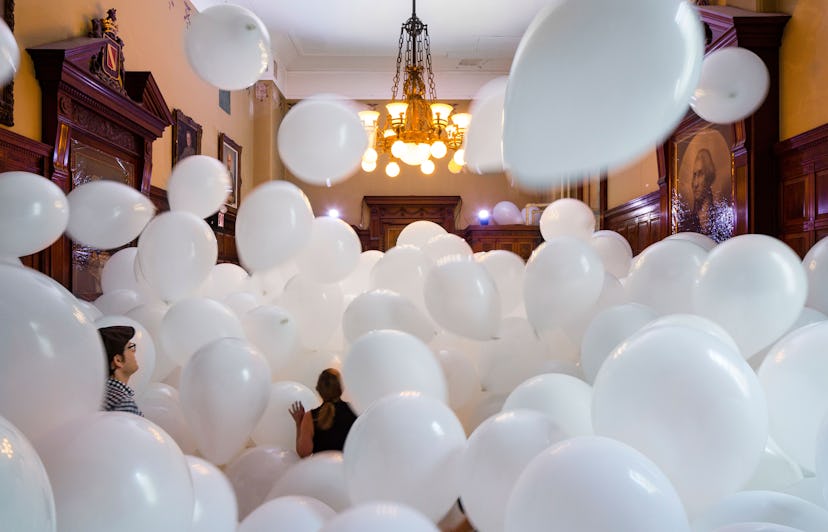Inside Artist Martin Creed’s Armory Takeover

When Martin Creed was up for the venerable Turner Prize in 2001, his contribution to the nominees’ exhibition was “Work No. 227: The Lights Going On and Off,” a room in which the lights are rigged, aggravatingly, to turn on and off at one-second intervals. It caused one woman to actually hurl eggs at the walls of the Tate Britain. (Creed went on to win the Turner.) These are the kinds of works—some might call them dumb tomfoolery, others witty subversion—on view in “Back Door,” the largest U.S. survey of Creed’s work to date, opening today at the Park Avenue Armory in New York. (Plus his new “Mouth” video series, including a film featuring Lily Cole.) Take a tour of Creed’s circus, here.
1
Martin Creed. Photo by Hugo Glendinning.
2
“Half the air in a given space,” 2015. Creed likes to work with balloons, and this installation invites the viewer into the work, even if you can’t see where you’re going. The show’s most Instagrammable moment.
Photo by James Ewing. Courtesy Park Avenue Armory.
3
The joke and punchline are one here: Two dogs, one comically large, the other comically small. If this doesn’t amuse you, Creed is probably not your type.
4
You’ve heard of automatic player pianos; here is one that is not played perfectly but slammed shut angrily at regular intervals, as if by a young, frustrated ghost virtuoso.
Photo by James Ewing. Courtesy Park Avenue Armory.
5
A roving band of pied-piping musicians will guide viewers through the show. If they go there, you should probably follow.
Photo by James Ewing. Courtesy Park Avenue Armory.
6
Amid everything, a tower of Lego pieces.
Photo by James Ewing. Courtesy Park Avenue Armory.
7
Creed likes to stack things. He’s stacked toilet paper rolls and cinder blocks into pyramids in galleries, mostly because he can. Here, chairs. An artist truly in touch with his inner annoying child.
Photo by James Ewing. Courtesy Park Avenue Armory.
8
“Work No. 800,” 2007. His art may seem haphazard and fanciful, but Creed, who came up a Minimalist in the mode of Carl Andre, has a deep and abiding sense of pattern, both figuratively and literally throughout his work.